The art department at Western Connecticut State University recently had its 2022 Master of Fine Arts Thesis Exhibition at Blue Mountain Gallery 547 West 27 St. New York, N.Y.
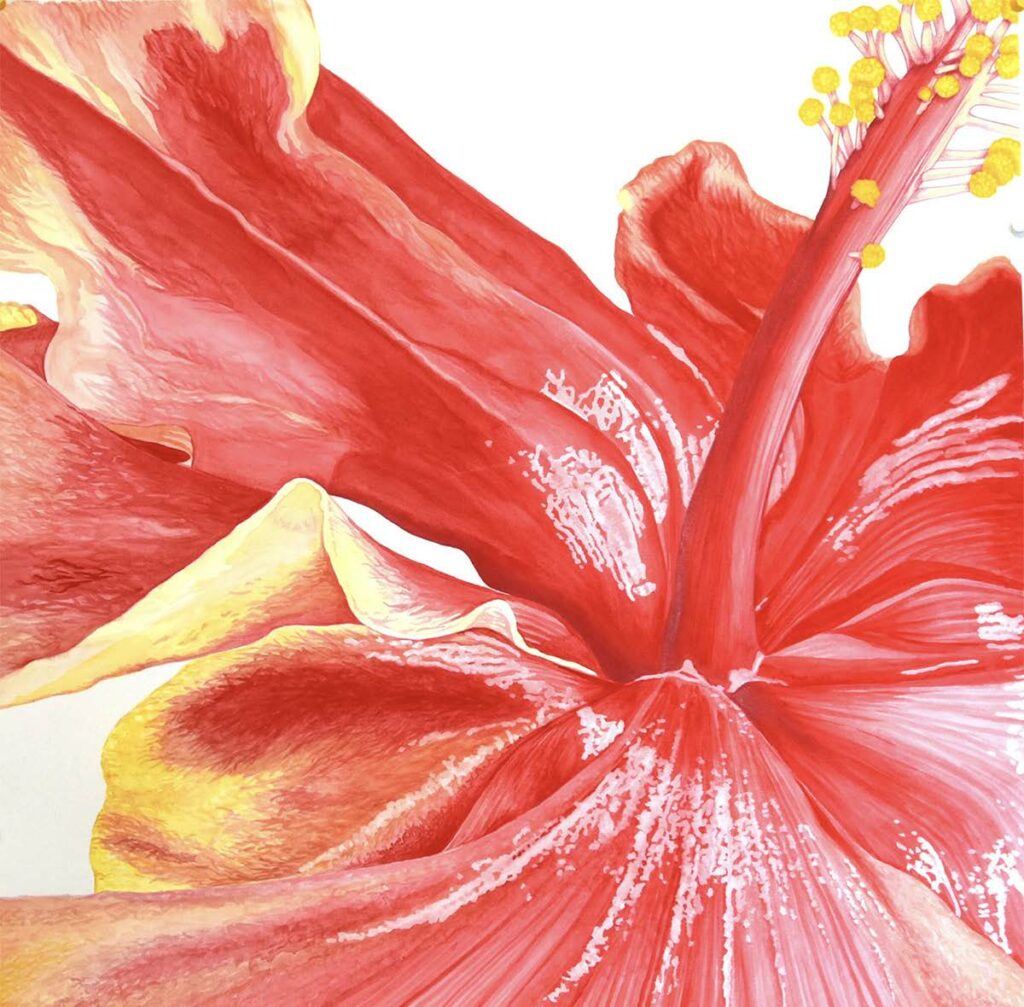
Janelle Chandler plays with our visual sense with her floral paintings created using colored pencil and watercolors. She takes us through a journey from large
to small. In Hibiscus: Hawaiian Red, she leads the viewer into the center of the flower where a stamen sprinkled with yellow seeds leans to the right towards the light. We are intimate with “flower-ness” in this view, close enough to imagine its sweet scent. Because this flower portrait is abstracted, one is offered a fresh and unexpected vision. The red coloring of the bloom is flecked with white strokes that could be light or glistening drops of dew. In this close-up we see yellow at the furled edges of the petals. Chandler invites us into the room where efflorescence lives. At the heart.
We are also offered a more classical view; a botanical rendering of the piece called, Dahlia: Castle Drive. She uses her skilled hands as we leap from the heart of flower to the study of flower, the classic shapes of color, leaves, petals. This presentation of beauty and contrast shows a caring appreciation of her subject matter.
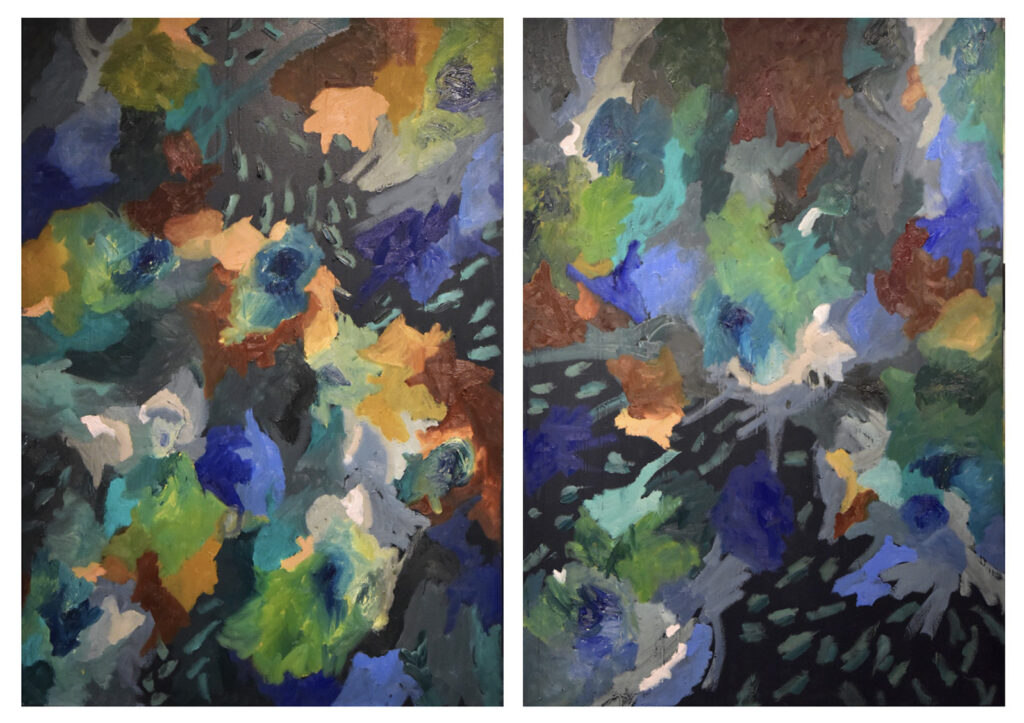
diptych, oil on canvas, 68″ x 96″
Kelsey Gilmore thrusts us into the mystery and movement of abstraction. The piece, The moon appears for the night travelers, is a diptych. One is greeted with a pastiche of blues, greens and cool splashes of white. As a traveler of the imagination, Gilmore shares her nocturnal journey with quick brush marks in light green as if they were a smattering of stars breaking through clouds.
Night Swim offers a punch of russet that mingles with an electric cobalt blue and turquoise. One can feel the waves thrashing. Splashes of color rise and fall. Is this a night swim where lovers meet at the shore or is one alone feeling the rush of colors fill the body as one’s arms swish through the water? If so, and as Ms. Gilmore suggests in her artist’s statement, she does become one with the sea.
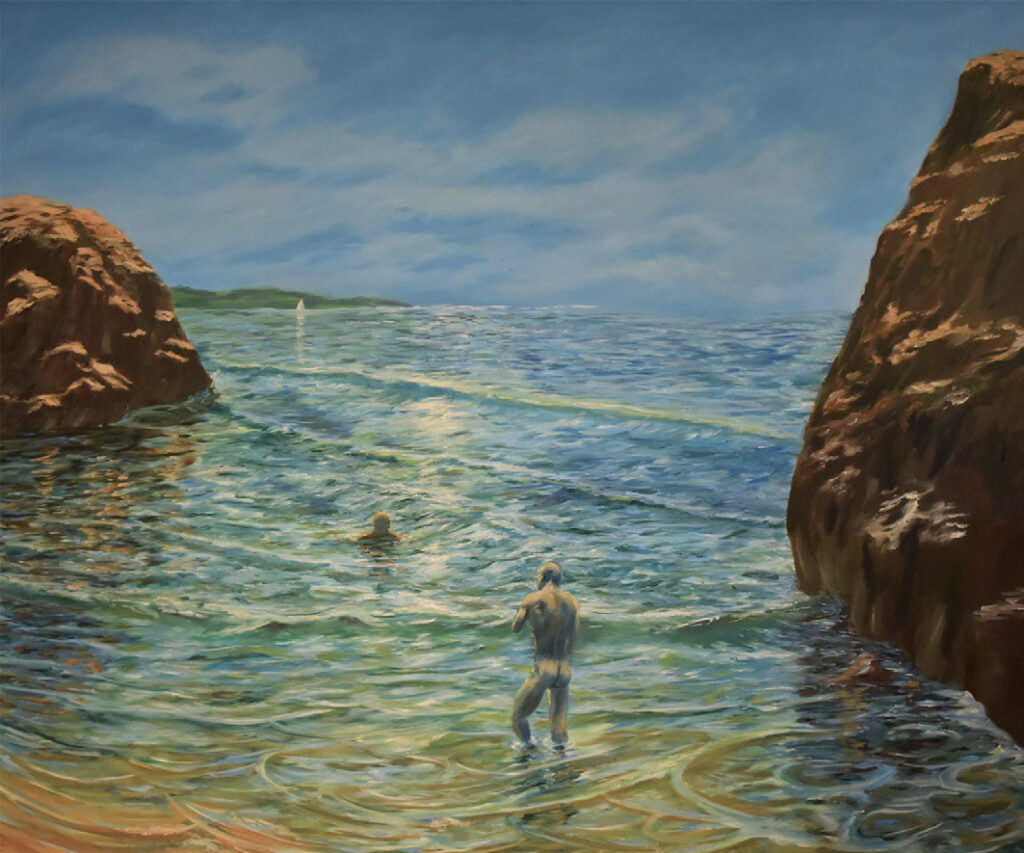
Water and the natural world coincidentally make their way into this show. In Don Houston’s painting, Man stepping into water, we feel the coolness of the water as a radiant and beautiful man steps into the sea. His body is painted in golden, light-filled strokes. His hair is reddish-gold. This work has two moods to it; optimism in its beauty, yet a note of loneliness. As the viewer, one wants to give this man a backstory. Does this man swim everyday in the sea? Is he a lonely writer living in a cottage close by? Is a lover watching him from the shore?
In Houston’s second painting, Two men on the beach, one sees another light-filled view of the sea. Set between two boulders are two men in the water. Eddies and currents flow and Houston again uses a golden tint to them. The moment is illuminated. The work with the singular figure is lit from inside the skin tone while in the piece with the two figures, the sea is incandescent, with moving patterns. Is this second piece a counterpoint to the first? Either way we are lifted into the mystery of sunlight and water.
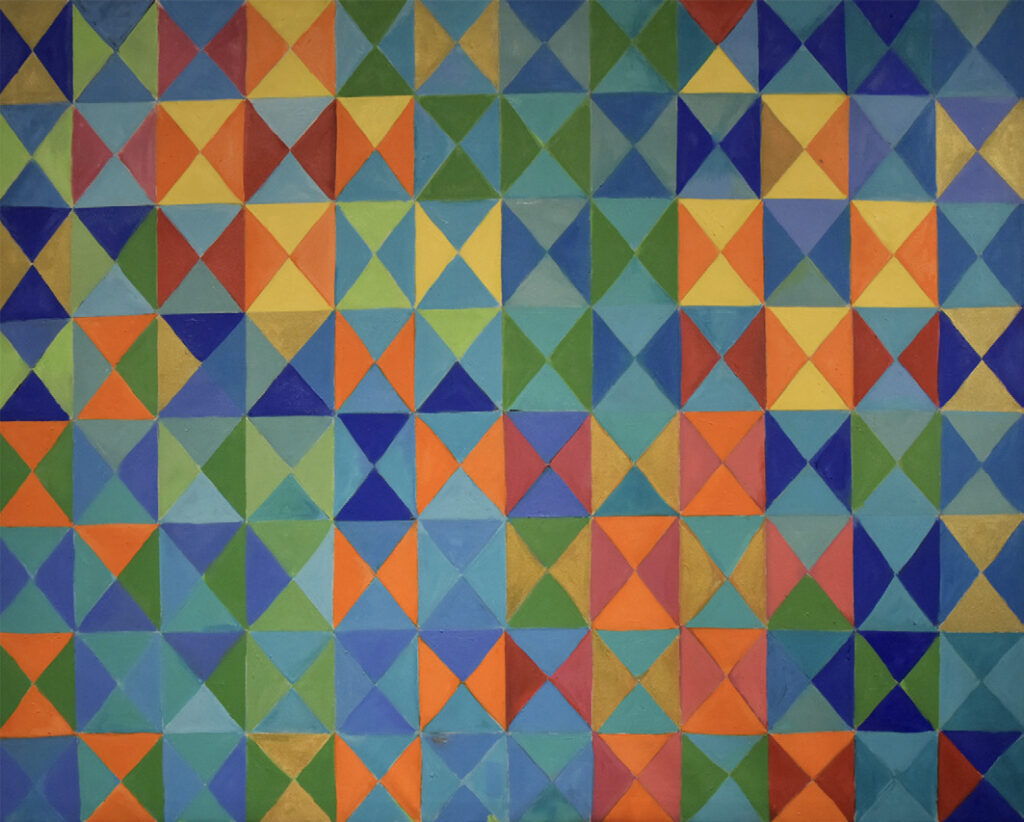
Robert Hudson’s series of paintings titled Bowtie references a symbol used by enslaved people on their quest for freedom. He explains in his artist’s statement, that when slaves headed North they would look for symbols on quilts to show them the way. The bowtie symbol indicated the necessity to travel in disguise; to change into clothes worn by a person of higher status to continue the escape on the Underground Railroad.
Hudson adds a contemporary twist of color to the symbol of the bowtie—a relief, a moment of beauty in such a horrific period of American history. One could consider these pieces as “sacred geometry.” The triangular and crisply painted bowtie shapes are presented in both horizontal and vertical directions. One asks the question, “is each triangle a prayer, a hope, a longing for a better life, for equality and freedom?” In the first Bowtie work, the colors are more vibrant with hits of bold, navy blue scattered through the pattern. There’s a sense of containment in this work. As if this symbol must be preserved, revered, and saved as one of many symbols during the time of slavery.
It is interesting to note that the spiritual meaning of a triangle represents enlightenment, revelation and a higher perspective. Throughout history and art, triangles were important symbols in Buddhism, Christianity and Hinduism. In alchemy, the triangle represents the three realms of our existence that we encounter in our human experience. The body, mind and spirit. One looks forward to see if Hudson will continue his exploration of the symbols and signifiers of Black History. G&S

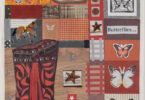
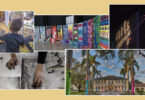
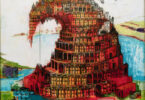
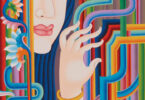
Thank you…